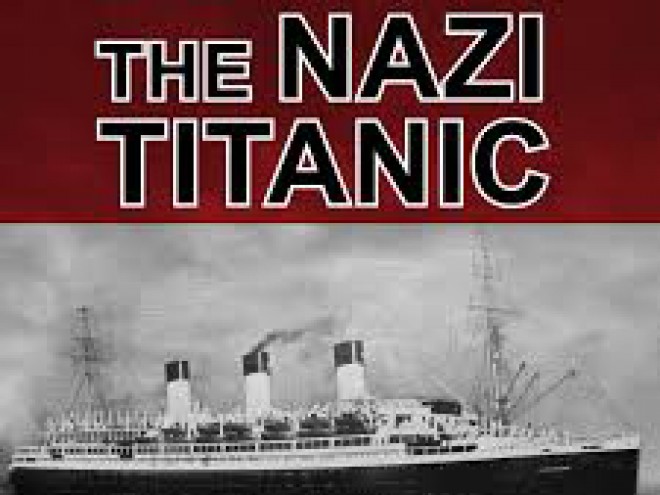Robert Watson uncovers the story of the ill-fated grand German ship Cap Arcona in The Nazi Titanic: The Incredible Story of a Doomed Ship in World War II. Beginning service in 1927 as the largest and most luxurious ship traveling to South America, the vessel ended the last days of World War II as a floating concentration camp for prisoners, many of them Jews transported from the Neuengamme concentration camp.
The story of this ship and its final passengers is a stark reminder that every life lost during that deadly period is precious, and that even the good intentions of the Allies — Britain’s Royal Air Force, in this case — could lead to inadvertent tragedy for over a thousand victims. Given the unprecedented loss of human life during World War II, the fate of the Cap Arcona may seem trivial. But Watson is able to weave an interesting story and draw attention to the poignancy of the last days of the Third Reich, the emptying of the camps, the Death Marches, and the sinking of a fabled ship on May 3, 1945, within a week of Hitler’s suicide and only four days before the Allied leaders met to formalize Germany’s unconditional surrender. The RAF pilots may have mistakenly attacked the ship, but the ultimate responsibility rests with the Nazis and their genocidal policies.
The Nazi Titanic is an interesting book about an unknown chapter of Holocaust history, uncovering overlooked documents and interviews survivors of this incident to provide context and personal details. Although only a few people survived the sinking of the Cap Arcona, Watson is able to identify many of them and trace their lives going forward. The book reads as a novel, introducing characters who are essential to the plot, including the Nazi Minister of Propaganda Joseph Goebbels, the Swedish diplomat and vice chairman of the Swedish Red Cross Folke Bernadotte, and even the head of the SS, Heinrich Himmler. At times The Nazi Titanic veers off into tangents that do not seem particularly relevant or necessary to the story; nevertheless, anyone interested in maritime history and learning about one of the Holocaust’s unexamined incidents — the story of a German luxury liner repurposed for military use, propaganda, and imprisonment — will find this book of supreme interest. It underscores the chaos of the last days of the Reich, as many of the innocent victims of Nazi terror lost their lives within days of liberation.





